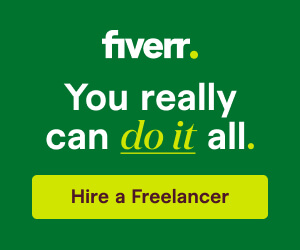Breaking into freelancing today looks completely different than it did five years ago. The rise of AI tools, changing platform algorithms, and evolving client expectations have transformed the entry path for newcomers. After helping over 200 people launch their freelance careers in the past year, I’ve identified the most effective no-experience strategies that actually work in today’s market.
Identify Transferable Skills You Already Possess
Everyone has marketable skills they underestimate. That retail job taught you customer service and inventory management. Parenting develops patience and multitasking abilities. Even gaming can translate into problem-solving and teamwork skills. Make a comprehensive list of everything you’ve done – paid or unpaid – then identify the underlying competencies. A friend recently landed her first freelance gig by positioning her volunteer church newsletter experience as “content creation and distribution management.”
Choose Services You Can Deliver Immediately
The biggest mistake beginners make is offering services they need training to provide. Instead, focus on what you can do competently right now. Can you organize files? That’s virtual assistance. Comfortable with basic photo editing? Offer image retouching. Fluent in a second language? Translation and proofreading are in demand. These starter services build confidence while generating income to invest in skill development.
Create Proof of Work Before Seeking Clients
Potential clients want evidence you can deliver, not promises. Build a portfolio with three to five strong samples, even if you create them speculatively. A graphic designer starting out might redesign local restaurant menus as examples. Writers can publish Medium articles demonstrating their style. Web developers can build sample sites for fictional businesses. These demonstration pieces become your credibility currency.
Set Strategic Starting Rates
Pricing too low attracts difficult clients and devalues your work, while pricing too high without experience leads to rejection. Research competitors with similar skills and experience, then price slightly below market average. As counterintuitive as it seems, charging 25−35/houroftenattractsbetterclientsthan25−35/houroftenattractsbetterclientsthan10-15/hour because it signals professionalism. Include room to raise rates after initial projects.
Leverage AI Tools Responsibly
Modern freelancers use AI as an assistant, not a replacement. Grammarly helps polish writing, Canva simplifies design, and ChatGPT accelerates research. Be transparent with clients about your tools – many appreciate efficiency gains when properly implemented. One virtual assistant increased her productivity 40% by using AI for email drafting, then personalizing each message.
Optimize Your Online Presence
Clients will Google you, so control what they find. A simple Carrd site with your services, portfolio, and contact information establishes credibility. Clean up social media profiles and consider creating content around your niche. A personal brand isn’t necessary starting out, but a professional online appearance is essential.
Start With Micro-Projects
Platforms like Upwork and Fiverr offer small, discrete tasks perfect for building experience. Look for “starter” projects under $100 that match your skills. These quick wins provide testimonials and portfolio pieces while minimizing risk for both you and clients. A web developer might begin by fixing broken links before tackling full site builds.
Master the Art of the Cold Pitch
Personalized outreach outperforms generic applications. Identify 5-10 ideal small clients in your niche, research their needs, then send tailored proposals explaining how you’ll solve specific problems. A social media manager might analyze a local business’s Instagram presence and suggest three immediate improvements in their pitch. This approach converts at much higher rates than mass applications.
Deliver Exceptional First Projects
Early work establishes your reputation. Go above-and-beyond on initial gigs with extra revisions, faster delivery, or bonus deliverables. One writer included a free meta description optimization with her first blog post, leading to ongoing work. These investments pay dividends through referrals and repeat business.
Develop Systems From the Beginning
Track time meticulously, even if not billing hourly. Use templates for proposals, contracts, and invoices. Create standard operating procedures for repetitive tasks. These habits prevent chaos as your client list grows. Many freelancers fail from disorganization rather than lack of skill.
Build Relationships, Not Just Income
The freelancer who helped a client through a website crash at midnight gets remembered. Send thank-you notes after projects. Check in periodically with past clients. Share relevant articles or resources. These touches transform one-time gigs into ongoing relationships that provide stability.
Reinvest Early Earnings Wisely
Initial income should fund business growth, not just personal expenses. Prioritize purchases that increase earning potential: better equipment, skill courses, or professional memberships. A $200 logo design course helped one freelancer triple her rates within six months by expanding her service offerings.
Specialize Based on Early Successes
Notice which services and clients bring the most satisfaction and profit, then double down. A general virtual assistant discovered she excelled at email management for coaches and pivoted to that niche, commanding higher rates for specialized expertise. Specialization reduces competition and increases perceived value.
Transition From Platforms to Direct Clients
While platforms provide starter opportunities, their fees and limitations hinder growth. Use initial platform success to build confidence and portfolios, then gradually shift to direct clients through networking and outreach. A graphic designer transitioned from Fiverr to serving local businesses within eight months, increasing his earnings fivefold.
Develop Multiple Income Streams
Freelancing volatility requires diversification. Combine client work with digital products, affiliate income, or teaching. A translator supplements project work with a $17/month glossary subscription for language learners. These additional streams provide stability during client droughts.
Set Boundaries Early
Establish clear work hours, communication policies, and scope definitions from the beginning. Clients respect professionals who respect themselves. The freelancer who answers emails at midnight soon finds clients expecting 24/7 availability. Protect your time and energy for sustainable success.
Track Everything Financially
Open a separate business bank account immediately. Use accounting software or spreadsheets to track income, expenses, and taxes. Many new freelancers encounter tax season surprises because they didn’t set aside earnings properly. Financial organization prevents crises.
Join Communities Strategically
Online groups provide support but can become time sinks. Choose one or two focused communities where you can both learn and contribute meaningfully. A copywriters’ Discord server helped one beginner refine her pitches while making valuable connections that led to work.
Embrace Continuous Learning
The most successful freelancers dedicate weekly time to skill development. Free resources like YouTube tutorials, industry blogs, and library books provide ongoing education. As AI changes the landscape, adaptability becomes your greatest asset.
Redefine What “No Experience” Means
You’re not starting from zero – you’re starting with your unique combination of life experiences, perspectives, and abilities. The client seeking fresh thinking may prefer your new approach over “experienced” freelancers stuck in outdated methods. Your differentness is an asset, not a liability.
Beginning your freelance journey in 2025 offers advantages previous generations never had – global connectivity, powerful tools, and more acceptance of remote work than ever before. The path requires patience and persistence, but each small step builds toward sustainable independence. Your first project won’t define your career; it will simply prove that getting started was possible all along.








